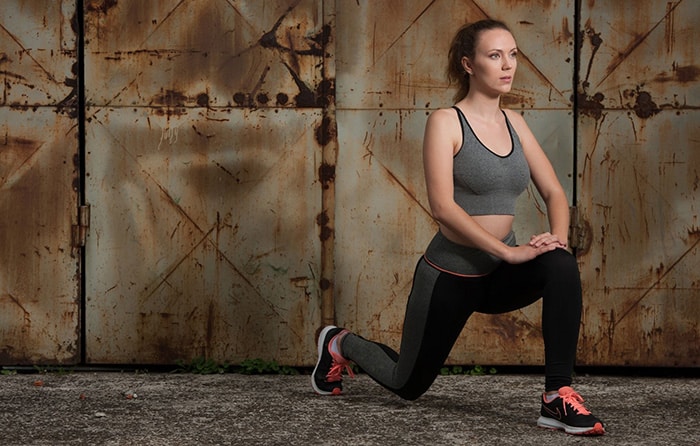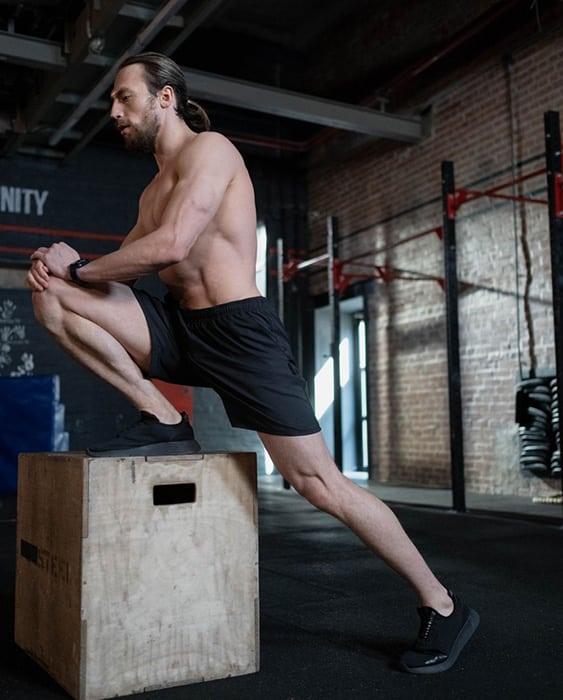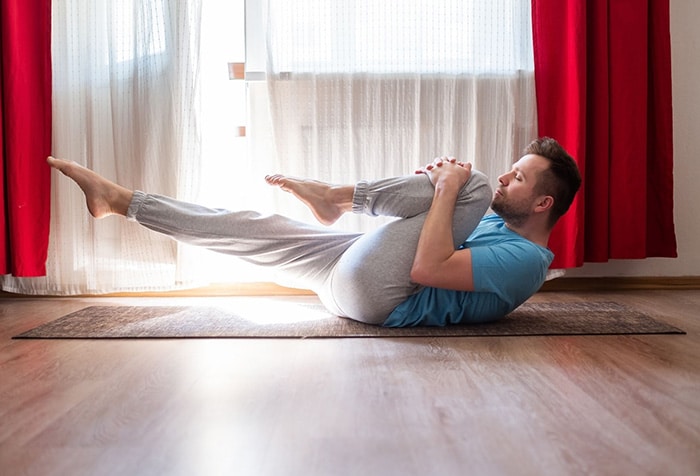The psoas is a little-known muscle in the human body, yet it plays an essential role in its functioning. Located at the level of the hips, it can be responsible for mechanical blockages and back pain if it is not flexible enough. It is therefore essential to relax it by practicing regular stretching exercises. L'psoas stretching will help you stay healthy and perform at the gym.
Anatomy of the psoas
Like the iliacus, the psoas is a muscle hip flexor. This is why you often hear about the psoas-iliac muscle.
Specifically, this muscle group allows each of us to lift our leg forward. When you walk or climb stairs, the psoas iliacus is a big part of the reason.
Composed of the small and large psoas, this deep muscle is located in the groin area. It is the junction between the upper and lower body. Therefore, the psoas is a postural muscle It is important to take care of it on a daily basis.
Because of its action of stabilization of the pelvis, the gluteus maximus is the antagonist muscle of the psoas.
Why do we need to stretch the psoas?
If you spend a lot of time in sitting position or that you engage in physical activities such as strength trainingIf you've been doing any of these sports, whether it's running, cycling or soccer, chances are your psoas has shortened over time. All these sports practices have in common that they over-stress the psoas and contract it.
When the hip flexor muscles are too tight, it can cause posture problems. The lumbar vertebrae (L1, L2, L3, L4 and L5) are pulled forward, creating tension and stiffness in the lower back. In 1 out of 2 cases, back pain are related to a lack of flexibility of the psoas muscle.
Similarly, due to a lack of stretching, it is not uncommon for athletes to suffer from psoas pain. This usually results in inflammation of the tendon. In other words, it is a psoas tendinitis.
A stiff psoas can also be responsible for inguinal pain (in the groin area) and serious knee injuries.
In addition to the risk of injury and the disabling aspect of pain, this lack of mobility can be a real obstacle to progress for bodybuilders.
In fact, some exercises requiring amplitude in the hips can become difficult to perform and lead to stress on the backbone. This is the case, for example, of the squat, the deadlift, the kettlebell swing or the hip thrust.
A psoas that is too stiff will prevent you from performing these movements properly and will cause injuries in the long term.
4 stretching exercises for the psoas
But then, how to stretch the psoas ?
First and foremost, it is important to know that the vast majority of psoas stretching exercises also involve the other hip flexors, namely the quadriceps, adductors and tensor fascia lata. By incorporating these 4 exercises into your weight-training programyou will gain in mobility and prevent muscle aches and joints.
For more comfort, don't hesitate to bring a sports mat. During each stretching movement, remember to breathe slowly and deeply.
The low lunge (or Anjaneyasana)
This is undoubtedly the most popular psoas stretching exercise. It is well known by the practitioners of yoga and pilatesFor whom this posture is called Anjaneyasana.
To soften the psoas, place one knee on the floor with the leg towards the back. The other leg should be bent at 90 degrees with the foot in front of you. This position opens the hip joint.
Simply tilt the upper body forward to feel a slight stretch in the psoas. Hold this position for 30 secondsThen switch legs. Repeat this stretching exercise 2 to 3 times.
If your psoas is already flexible enough, you can make the exercise more challenging by placing the foot of your back leg on a high support (sofa, coffee table, etc.).
Stretching of the psoas while standing
This movement is ideal for stretch the hip as a whole.
For example, place the foot of your right leg on a chair, bench or coffee table, so that your knee bends. The foot of your left leg stays on the floor.
Without taking the heel off the back leg, accentuate the knee flexion by moving your chest forward to release the psoas.
Stretching of the psoas in a lying position
This stretching exercise is largely inspired by the yoga posture Pavanamuktasana.
Lie on the edge of a bed with both feet on the floor. The objective of this movement is to bend one leg and bring it up against your torso, while keeping the other on the floor. Hold this position for a few seconds, then switch legs.
This relaxation is particularly effective in combating back pain. It can also be done by lying down directly on the floor.
Stretching the psoas with a foam roller
To perform this exercise, you will need a massage roller (or foam roller).
Particularly effective in reducing muscle pain, this self-massage accessory can also be used to stretch the psoas.
To do this, lie on your back and place the foam roller under your buttocks, just below your lumbar region. Extend one leg, keeping your heel on the ground, and bring the knee of the other leg up to your chest for a few seconds to release the psoas.
Conclusion
For become more flexible and prevent back pain, do these 4 stretching exercises for the psoas muscle 3 to 4 times a week. As a strength trainer, you need to be aware of the importance of your hips, especially your psoas iliac. Consider incorporating these movements into your training program to improve your mobility and make sustainable progress.










